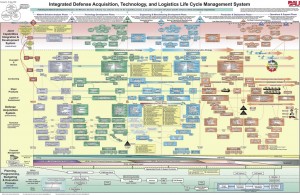The Ugly Truth About Ugly PowerPoint Slides
With so many blogs, books, and classes dedicated to designing beautiful PowerPoint slides, you have to wonder why there are so many ugly, dense, bar charts of doom looking slides in business presentation?
I have a confession to make. I AM a part of the problem. If you are in the corporate world, most likely you are too.
There is an ugly truth about PowerPoint that no one in business wants to discuss. It is one of the main reasons for an overabundance of crappy looking slides. The truth is…and I hope you are sitting down for this…
PowerPoint is used liked Word
I know it is sick and wrong, but it is very true. In the business world, PowerPoint is now the standard for writing reports. It has been for a very long time. It's not going to change. The dense slide with 100s of words and maybe a picture are here to stay.
It gets worse. These report slides are then dropped into PowerPoint presentation decks and taken to speaking engagements around the country. It's the awful business truth. If you work in the corporate world, you know exactly what I mean. With the million emails you get a day, clients to make happy and employees to manage, you frankly don't have the time to redo the report you just spent a month writing into a slick looking presentation deck.
It's a lot of work to take a chart with 27 bars and reduce it to a stunningly simple numerical representation. Sometimes (most of the time) bar #26 is the metric your client wants to see.
Speaking needs to shine to overcome the slides

Your Speaking needs to shine to overcome your slides
You, the business professional, now can embrace your ugly slides; however, there is a trade-off. It is your job to take the emphasis off the ugly and showcase your own speaking skills. Here are several pointers for helping your audience navigate your slides.
- Do not read your slides – they are not a teleprompter – talk to your audience. If you read them the slides, they don't need you! Unless you are going to serve them warm milk before they fall asleep in your presentation.
- Know what's important to your client – You are the expert on the information you are presenting, but you also are the expert on your client and what they need. Understand their pain points and challenges and solve those in your presentation. If you solve their problems, they won't care about your horrific slides.
- Find the story – as you practice your presentation (yes practice is a must) focus on the story you want to tell. You are the audience's GPS. Take them on the trip that will solve their business woes. Navigate them through your slides and presentation. Don't lose sight of your story.
- Edit your slides down – No one expects your slides to look like a priceless Van Gogh, but spend 30 minutes getting rid of the text you know you are not going to discuss. If it is not relevant to the story, highlight and press delete. It will make your slides slightly more audience friendly.
In business, ugly and overwhelming PowerPoint slides are something we have to get use to. However, those crappy slides put more onus on your speaking skills. Your speaking skills can overcome bad PowerPoint slides.
Disclaimer #1: This post is for those who do business presentations only – if you are another type of speaker – don't think I gave you carté blanche to create ugly slides.
Disclaimer #2: I love Nancy Durate's book slide:ology: The Art and Science of Creating Great Presentations and Garr Reynold's book Presentation Zen: Simple Ideas on Presentation Design and Delivery
. In my presentations I do my best to apply their Jedi slide design principles. I love Haiku Deck for making it so easy to design fabulous looking slides. If disclaimer #1 applies to you, I recommend checking out those books and the app.


Amen, sister! I got started doing workshops on this after sitting through an academic conference session in which the presenter literally had 15 bullet points to a slide, with no animations so the entire 15 were revealed all at once, and every word he said was read from the slides. Arrrrrrrgh! Research done via Cognitive Load Theory shows audiences actually retain LESS information this way than if they had only the speaker speaking OR only the slides.
It’s so bad that a lot of people (including early CLT researchers) have called for doing away with slideware altogether, but that’s throwing out the baby with the bathwater and some other cliches. Used properly, it can be a great reinforcement, and it only take a few guiding principles (Duarte and Reynolds are great guides) to make it so.
There are a few simple steps that can make it more digestible for your audience, right? Like adding animation. Not using the slides as a teleprompter. Breaking up those 15 bullet points in 5 slides with 3 points each. It doesn’t take a ton of time and makes a world of difference.
Slides aren’t every going to be fantastic but they can be better! Thank you for your comment, Donn!
I love using PowerPoint for reports! It makes it easy to graphically display information and draw attention to key points. I don’t understand why people use it like Word, though, and I have no idea why Word-y PowerPoint reports get used as “slides”. A report is meant to be read and discussed. It is not supposed to be a presentation.
I think the problem arises because people think they can’t or shouldn’t deviate from the original PowerPoint doc when they are asked to “present the report”. WRONG! The experience of listening to a presentation is fundamentally different from reading a report. The slides a speaker uses should reflect this difference and be adapted or created accordingly (as you point out in #3 and #4).
And you’re absolutely right. Sometimes it’s hard to adapt the content of the original report. In those cases speaking about the slides instead of reading through them (#1) and focusing on the info that the client cares about most (#2) will make the presentation infinitely more palatable!
I think PowerPoint for reports is a nice tool for reports too. The software started out as presentation software and was not really meant for how business uses it today. Microsoft hasn’t really adapted to how business are using it either!
I’ve had the experience of having little-to-no say about being able to reformat the slides. I once did a webinar and the PPT report had 4 charts on one slide. I had to beg the client to let me parse out those charts because there was no way any could read what was on them. It was so strange!
Keep it short and to the point. Make it fun and dynamic. The last thing you want to hear when the lights are dimmed, is snoring.
Cheers,
Marc
Exactly Marc. I think your comment highlights the importance of how being a good speaker is paramount when your slides are ugly.
Very thought-provoking, Michelle, and very well put!
I really like your quote “If you solve their problems, they won’t care about your horrific slides.” That’s the bottom line.
Unfortunately of course, most presenters don’t solve the audience’s problems, so the horrific slides just add insult to injury!
Re your point #1 (and related to #4): Cutting text from slides, pasting it into the Notes pane, and then using Presenter View lets the speaker keep their teleprompter – but not force it on the audience! For details about Presenter View, see:
http://office.microsoft.com/en-us/powerpoint-help/view-your-speaker-notes-privately-while-delivering-a-presentation-on-multiple-monitors-HA010067383.aspx
Thank you Craig. Always be adding value by solving problems. The only problem with presenter view is that the presenter should NOT be using it as a teleprompter. I saw a presenter once who just stared at the computer screen right in front of him instead making eye contact with the audience. He wouldn’t have know if we got up and walked out. Presenter view is fabulous for knowing what is coming next though. It does help with transitions.
I absolutely agree that reading to the audience is TERRIBLE! So I should’ve said that the teleprompter should just contain mnemonics for the speaker, not a script.
(If Presenter View contains full sentences, that’s almost as bad as if the slides contained full sentences. Wherever the sentences are, the speaker will almost certainly read them, which prevents eye contact and – as you say – puts people to sleep.)
I really like that your post suggests it’s INEVITABLE that many speakers will use bad slides. That seems like a fresh (and useful) perspective.
To me, it’s also inevitable that most speakers will rely on prompts. I just want to minimise the impact of the prompts on the audience, so that’s why I suggest moving them from the slides to Presenter View (and cutting them from sentences to mnemonics).
I felt that someone had to come clean about bad PowerPoint slides in business presentations. Data driven slides cannot be Zen like so the speaker has to compensate for their bad slides.
I agree that prompts are inevitable especially for long presentations.
Or hire a professional designer.